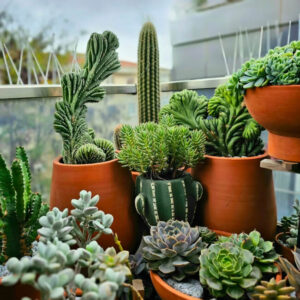We’re getting increasingly into sustainability, and making the most of every plant is a growing part of that drive towards less waste and more produce. Edible flowers have long been seen as a mere garnish for salads, but throughout history, humans have used edible flowers as herbal remedies, and to add zest and sweetness to cooking.
In this article we’re going to look at the best edible flowers you can grow in your garden, how to prepare them, and the kind of flavours you can expect. Be warned, it’s a long list, but every single edible flower on our list has a unique purpose in the kitchen as well as in the garden.
More...
What are Edible Flowers?
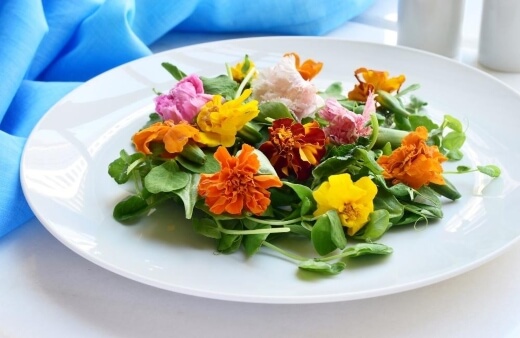
Edible flowers are grown for their beauty as well as flavour. In this article we’re going to cover those flowers that look great in the garden, great on the plate, and taste far better than you’d ever expect. While you might be surprised by some of the flowers that are edible, others are better known.
The biggest benefit of edible flowers is that they often taste how they smell, but with a sweet nectar filled base that adds incredible zest to salads and teas.
While most gardeners are used to picking leaves from salads, and enjoying the roots of radishes and onions, there is a far more refined pallet of flavours you can bring to the table from flowers.
Best Edible Flowers to Grow in Australia
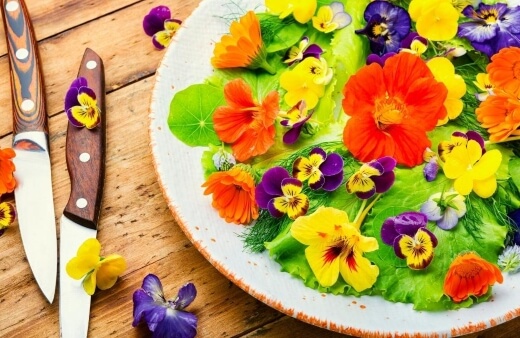
Below is a list of all common edible flowers, with some growing tips, and a description of flavour, culinary use, and how to prepare edible flowers from different plants. While many edible flowers, like Nasturtiums and Viola are well known, others might surprise you.
Australian native edible flowers are always easier to grow and are typically more drought-tolerant through summer. Native edible flowers will also help attract wildlife and pollinators to the garden.
Before we jump into the full list, here’s a brief run-through of the native bush tucker flowers you can eat in Australia:
- Bush Cherry (Syzygium australe)
- Cape Jasmine (Gardenia jasminoides)
- Elderberry (Sambucus australasica)
- Finger Lime (Citrus australasica)
- Forget-me-not (Myosotis sylvatica)
- Running Postman (Kennedia prostrata)
- Lemon Myrtle (Backhousia citriodora)
- Lemon Scented Tea Tree (Leptospermum liversidgei)
- Mint Bush (Prostanthera)
- River Mint (Mentha australis)
- Wahlenbergia
1. Brisbane Silver Wattle (Acacia podalyriifolia) - Australian Native

Acacia podalyriifolia is a native Silver Wattle, often called the Brisbane Silver Wattle or the Queensland Silver Wattle. Its culinary uses vary widely and the entire plant can be eaten as a salad crop, but its real value is its flowers.
The fluffy, pollen-rich flowers of these native acacias are incredibly sweet, and can be eaten raw but are best used mixed into batter for fritters, or even folded through a falafel mix to add a hidden fragrance in place of coriander.
Here are a few tips on how to prepare and use wattleseeds.
2. Yarrow (Achillea millefolium)
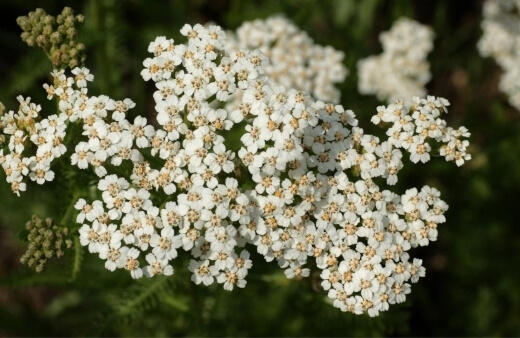
Yarrow has tons of herbal uses but grows widely throughout Europe and America as a wildflower. Yarrow happily grows in lawns and can survive reasonable droughts too.
Their leaves are bitter, but their flowers have a wonderful sweet bitterness similar to citrus pith. The unusual flavour is perhaps an acquired taste, but they work incredibly well as a flavouring in beers or stewed into homemade cordials as a preservative.
3. Anise Hyssop (Agastache foeniculum)
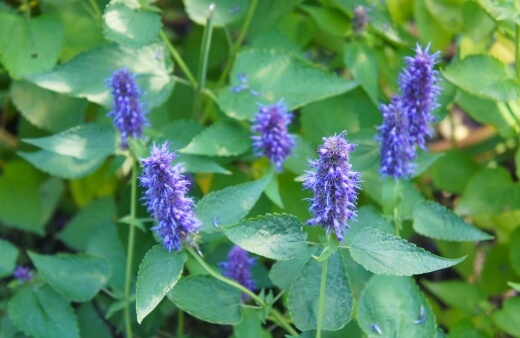
Every part of Agastache plants is edible, from the leaves, to the stems, to the flowers. Their flowers have a powerful aniseed flavour, while some varieties have a more distinct taste of liquorice.


Get Your Free Guide:
Master Growing Australian Natives eBook
A Must Have Complete Guide for Every Australian Garden
Get Your Free Guide:
Master Growing Australian Natives eBook
A Must Have Complete Guide for Every Australian Garden
You can tell before eating them which has which flavour through the scent, which directly mirrors their flavour. The only downside of growing Agastache is that they are so full of flavour that they’re often eaten by wildlife before we get a chance.
4. Persian Silk Tree, Mimosa (Albizia julibrissin)
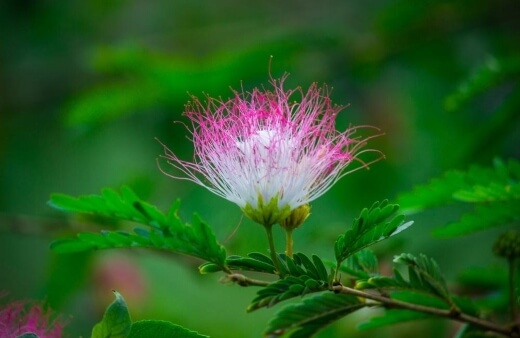
Albizia julibrissin, or Mimosa Tree, is a gorgeous tree that grows happily throughout Australia. While its flowers are edible, its beans are considered toxic, so do not eat any part of the plant other than the flower.
As you might guess from the flowers, they have a pretty horrible texture eaten raw, but make a beautiful sweet tea.
5. Alyssum
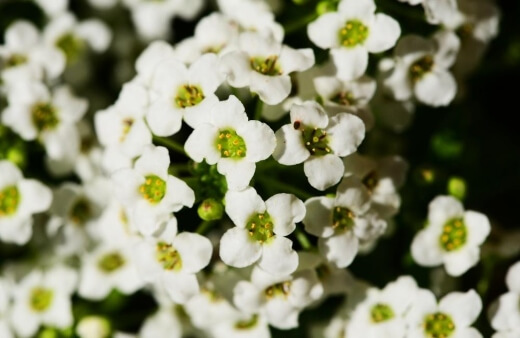
Alyssum has such a gorgeous flavour when eaten raw. The edible flowers of alyssum might have gone out of fashion in the gardening world, but their scent has earned them the name “the honey bush” in our house and the flavour of the fresh flowers is intensely sweet.
Weirdly, while alyssum flowers are best eaten raw or brewed into a tea, they begin to taste like brassica when cooked or stewed in a soup, so are great for a quick umami hit.
6. Pigweeds (Amaranthus)
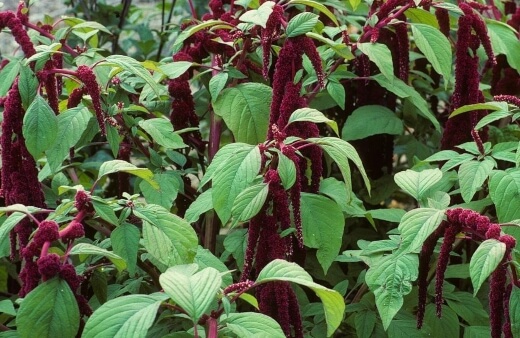
Amaranthus are a serious miracle crop. They make grain that is exceptionally attractive to wildlife, and high in protein, but before it reaches that stage, the leaves and flowers of Amaranth are edible too and have a delicate nutty flavour, which hints at the nutty seeds to come.
Complete guide: Amaranthus How to Grow and Care Guide
7. Snapdragons (Antirrhinum)
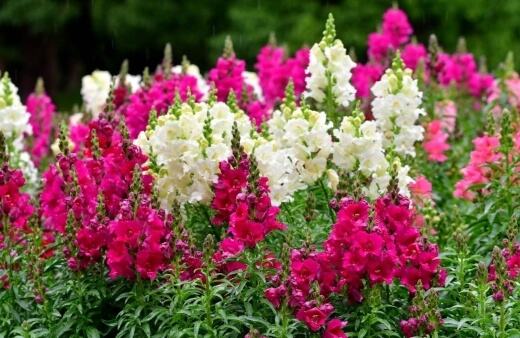
Snapdragons are the epitome of edible flowers and probably the reason most people don’t really like edible flowers. Personally, I really dislike the flavour of antirrhinums as they have a lingering bitterness, but they can work.
Try adding snapdragon flowers to a bitter salad with fresh radicchio and cos lettuce and a creamy dressing.
In-depth guide: How to Grow Snapdragons in Australia
8. Apple / Crab Apple Flower
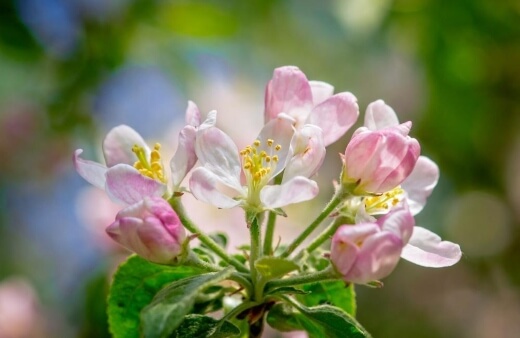
Obviously, apples and crab apples are edible, but did you know you can eat the flowers of Malus trees? Deepening on the soil quality in your area they can have a really sugary nectar at their base which tastes just like the scent of spring blossom.
Their flavour is designed to entice bees, and you can see why pollinators enjoy it. The real benefit of eating apple tree flowers is that it helps the tree produce bigger and better fruit. (Learn how to store apples here)
By harvesting half your bloom for salads, you reduce the fruit production, meaning the tree can focus on creating bigger, better fruit in late summer and autumn.
9. Australian Honeysuckle (Banksia) - Australian Native
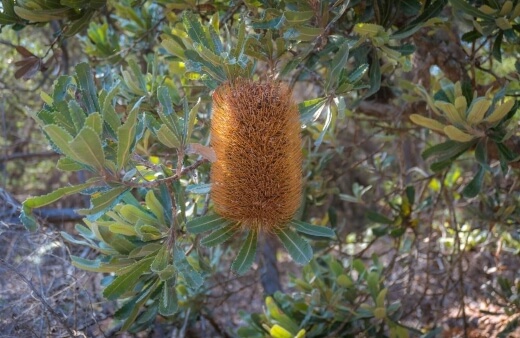
Of all the nectar sources in Australia, the Australian Honeysuckle is by far the most productive, growing happily all over the country and producing copious amounts of sweet, sugary nectar that can be eaten straight from the plant, or stewed into a sweet syrup. For an even moreish treat, try roasting banksia flowers whole.
10. Basil (Ocimum basilicum)

Basil flowers taste, you guessed it, like basil, but true to form, they have that nectary centre designed to attract pollinators which separate the flavour of the flower from the leaf. Add basil flowers to salads whenever you see them.
By deadheading basil back to a pair of leaves you help bush out the plant and prolong its life into late summer. Basil flowers can be eaten raw, or used mixed into sauces and soups, just like the leaves, but tend to hold their shape, so chop them small.
11. Begonia
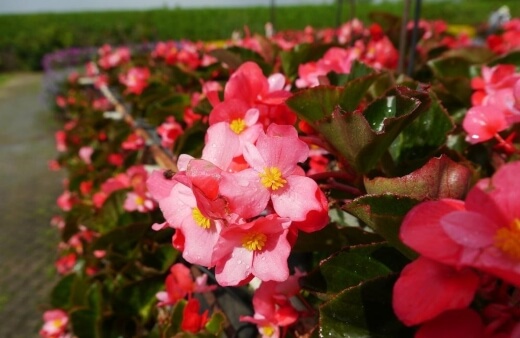
I was astonished when I found out that begonia was edible. These beautiful container plants have completely edible flowers, but make sure you’re only eating tuberous begonias.
Other forms of begonias contain calcium oxalate which is incredibly toxic and can cause severe stomach irritations. The flowers of tuberous begonias have a lemony flavour and hold their form well in salads.
Complete guide: Begonia Ultimate Growing & Care Guide
12. Bidens
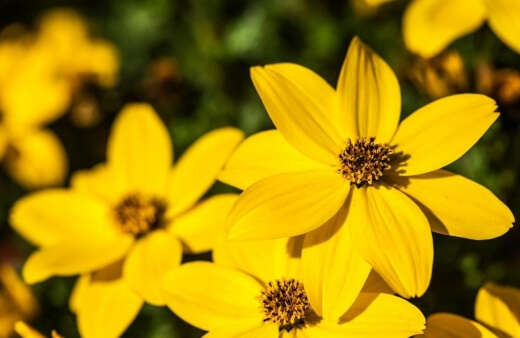
Bidens were originally discovered in Mexico, but can be grown in every corner of the world, and tolerate drought, heavy rainfall, and pretty much everything in between provided they’re in full sun.
Biden flowers can be eaten whole, or as individual petals of garnish cooking, but both methods will give a gentle honey flavour to a dish whether you cook them or eat them raw.
13. Biennial Clary (Salvia sclarea)
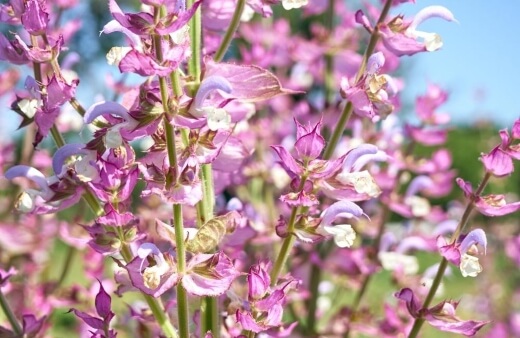
Salvia are incredibly important to understand, as some varieties are very much not edible, while others, including sage, are very much edible, from the roots to the flowers.
Biennial clary is one of the most common garden salvias in Australia, and works beautifully in salads, with edible leaves and flowers. Their aroma is more attractive than their flavour, but as we know, you taste it through your nose too!
14. Borage (Borago officinalis)
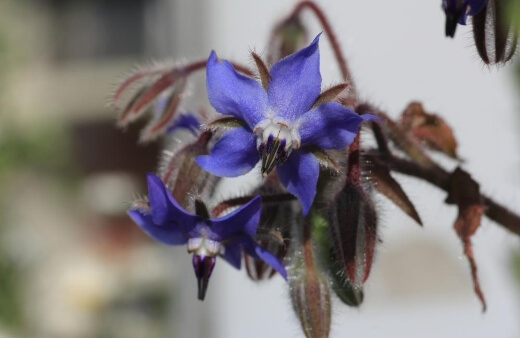
Borage is not just a green manure, they’re an incredibly useful plant for the kitchen too. Borage leaves have a cucumber flavour which adds zest and freshness to salads, which is accompanied well by their nectar if you pick them early in the morning.
If you’re serious about growing flowers for salads, borage is an absolute must-have plant.
15. Bush Cherry (Syzygium australe) - Australian Native
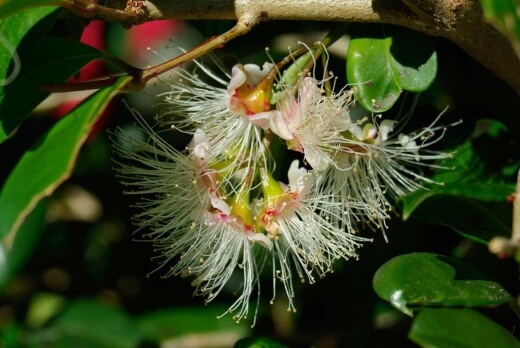
Source: gardensonline.com.au
Cherry trees have distinctly varied flavours, but almost all varieties other than shrub cherries have edible flowers. While bush cherry flowers are not particularly flavourful, they do hold their shape so make an excellent garnish for drinks and salads.
Complete guide: Syzygium australe Australian Native Growing Guide
16. Busy Lizzie (Impatiens walleriana)
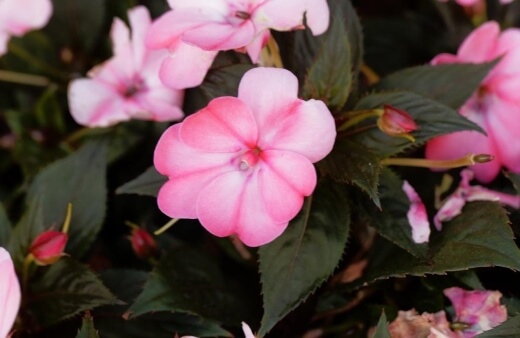
Busy Lizzies are one of the more traditional edible flowers, often used to garnish cakes and desserts without affecting their flavour. Edible flowers that don’t impact flavour are useful in the kitchen as they offer a more authentic decoration without having to use excess icing or sugar papers.
17. Butterfly Pea (Clitoria ternatea)
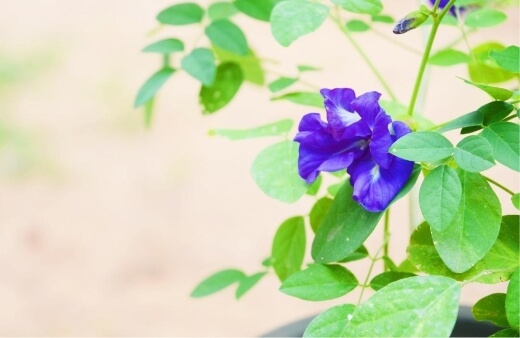
Also called Asian pigeonwings, the butterfly pea has some of the most intensely coloured blue flowers imaginable, and they thrive in our climate in Australia. (See our compilation of blue flowers here.)
Their flowers produce the most elegant blue dye, which is often used to colour fabrics, but when infused into water at just below boiling point, it releases a sweet fizzy fragrance and a wonderful colour.
Traditionally, they were used to create tisane, an infusion of herbs, fruit or bark steeped in hot water until all the nutrients and minerals are released into the water.
There is very little evidence of the medical benefits, but from personal experience, sitting in the garden on a summer’s evening, drinking a crystal clear, bright blue, an infusion made from flowers you’ve grown yourself just can’t be beaten!
Complete guide: Blue Ternate Ultimate Growing and Care Guide
18. Cape Jasmine (Gardenia jasminoides) - Australian Native

Though not strictly native to Australia, its early introduction has seen cape jasmine thrive in our climate, and it makes a wonderful garden flower, with bushy spring growth followed by generously scented summer blooms.
Cape jasmine produces masses of edible flowers whose flavour mirrors their sweet aroma and works well as a sweetener for pickles, vinegars and preserves, or just eaten fresh in salads.
19. Carnation or Pinks (Dianthus)
Dianthus, also called Pinks or Carnations, are the iconic lapel flowers with a delicate spicy fragrance that makes them incredibly popular as cut flowers.
Their fragrance isn’t far from their flavour, but there’s an undertone of cloves and pepper that you wouldn’t expect, making them incredible either in salads, or mixed into bean burgers and falafel.
When preparing carnations for eating, remove the base of the flower, leaving just the petals and stamen intact as the heel of each flower has a bitter flavour that interrupts the sweet spice.
20. Camellia
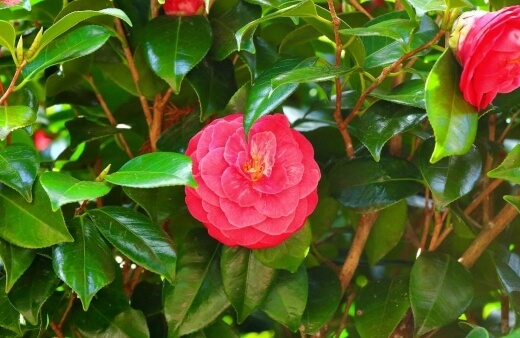
Camellia is most often grown as an early flowering shrub, but its leaves make a traditional tea when dried, and its flowers have been used in Asian cuisine for centuries. Despite their beauty, camellia flowers are fairly flavourless but make a great garnish that’s safe to eat.
Complete guide: Camellia Australian Growing Guide
21. Bellflower (Campanula)
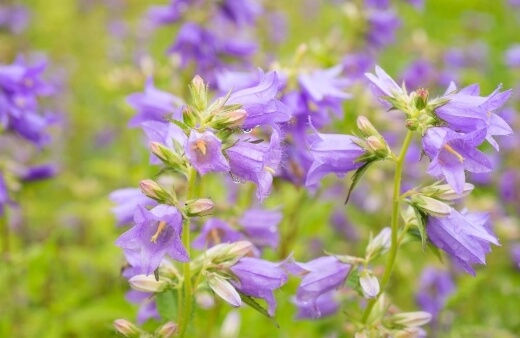
Campanula is incredibly easy to grow and other than needing a little humidity, need barely any care often found growing on cliff sides, or naturalising in rockeries with little soil.
Campanula flowers are a great way to get into edible flowers as their abundant blooms can be harvested to encourage more flowers later in the season, but they have a very mild flavour.
Picked early in the morning they will add a slight grassy freshness to a salad.
22. Candytuft (Iberis)

Candytuft are exceptionally beautiful plants. We first tried to grow them in a mixed meadow, but they quickly took over. Boiled, baked, or fresh, they have an unusual but pleasant sweet brassica flavour, similar to steamed sprouting broccoli.
23. Catmint (Nepeta cataria)
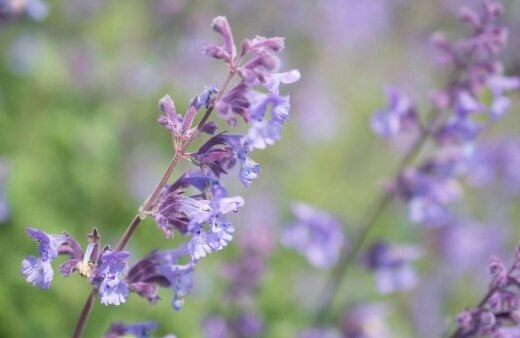
As well as being a great way to attract cats to your garden (if you want them), catmint is a delicious addition to tomato sauces with an earthy flavour than most mints. Its flowers are very heavily scented, and add a basily, minty, aroma to sauces.
24. Eastern Redbud (Cercis canadensis)
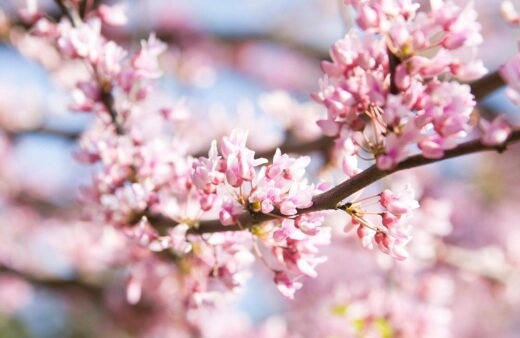
Cercis canadensis is my favourite tree, for too many reasons to list here, but did you know that these beautiful trees, with their red heart-shaped leaves, have purple flowers which are edible. Not only that, the flowers of Cercis canadensis have a higher vitamin content than oranges and most green vegetables.
Cercis only flower for a couple of weeks in spring, and the flowers are often hidden by young leaves as they flower from the stem, not their tips, so keep a close eye for these vitamin-rich flowers.
Check out our growing guide for Cercis canadensis ‘Forest Pansy’, a very popular cultivar.
25. Chicory, Radicchio
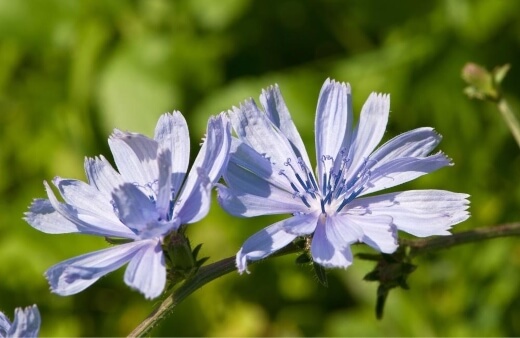
If your salad crops have bolted, don’t throw them on the compost just yet. Bolted chicory will typically flower within a week or two, and its flowers have a milder flavour than bitter chicory, which makes an excellent addition to drinks and pickles as a replacement for celery.
26. Chives / Chinese Chives (Allium schoenoprasum)
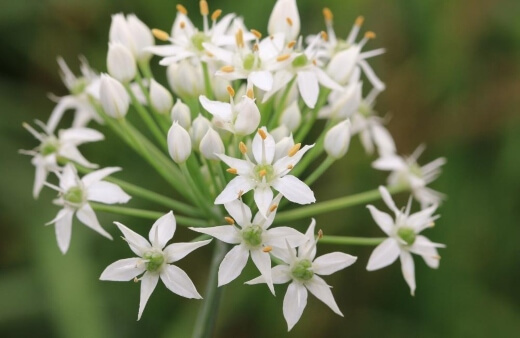
Chives are a member of the allium family, and their flowers have a beautiful but delicate onion flavour. Add chive flowers to salads, scrambled eggs, or omelettes, either as a garnish, or cooked through.
One caution, if you’re not a big fan of onions, is that chive flowers can often have a more intense onion flavour than the leaves, so eating them whole when raw can be more than a touch overwhelming!
27. Chrysanthemum
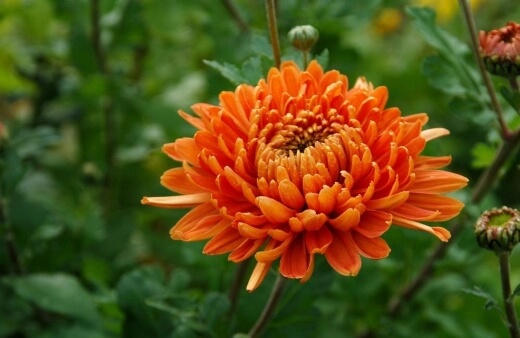
All chrysanthemums have edible flowers with a strong spicy taste. Garland chrysanthemums were traditionally used as a spice alternative in Japanese cooking and they add a very distinct flavour similar to pepper but with grassy bitterness.
Complete guide: How to Grow and Care for Chrysanthemum in Australia.
28. Citrus Trees
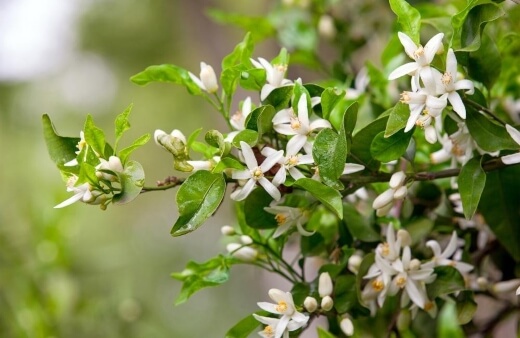
Citrus flowers are known for their intense scent, with floral, nectar-rich tones of orange and lime coming through all citrus blossoms. There are many native citrus trees you can grow in your garden too, but all will thrive outdoors in most of Australia.
As with all citrus, the flowers work well in savoury and sweet dishes, but when eaten raw they have rich nectar so are a great treat if you’re walking past one in the garden.
29. Coriander (Coriandrum sativum)
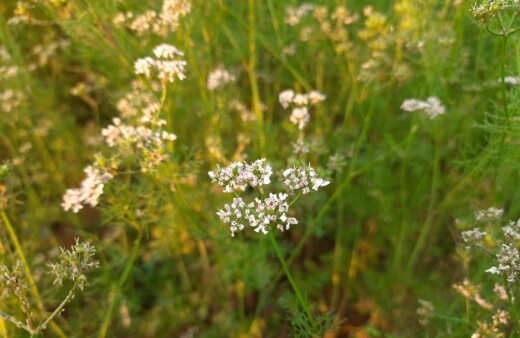
Coriander flowers taste, you guessed it, just like coriander. Their flavour is slightly sweeter, but they work really well in salads and stir-fries as a twist and make the most of coriander plants that have gone past their best.
30. Cornflower (Centaurea cyanus)

Cornflowers are a brilliant meadow plant and despite not being native to Australia, are brilliant for pollinators, and will help attract wildlife into the garden.
The fluffy blue flowers are sweet and spicy with a slightly medicinal zing. They lose their flavour when cooked, so sprinkle them over meals as a garnish.
31. Sulfur Cosmos (Cosmos sulphureus)
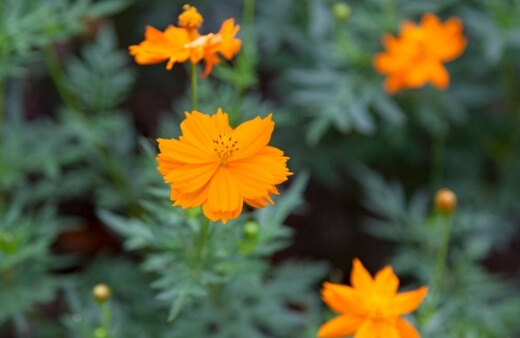
Note that we’ve made this very specific to Cosmos sulphureus, rather than all species of cosmos. Most cosmos are slightly toxic, so make sure you’re growing Cosmos sulphureus if you want an entirely edible garden.
Their young leaves and flowers adds a colourful zesty kick to salads.
32. Courgette
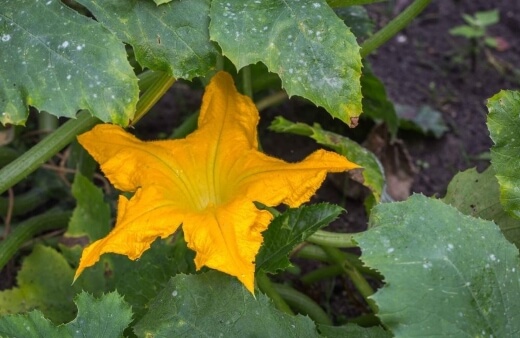
Courgette and squash flowers are beautiful when stuffed with rice and minced courgette then baked. The flowers of courgettes hold nectar at their base before they begin to form fruits, but if picked with young fruits attached can be cooked or griddled whole.
By far the best way to use courgette flowers is to stuff them with rice and minced courgette and throw them on the BBQ in summer.
33. Montbretia (Crocosmia)

Crocosmia flowers are edible but flavourless. The real benefit of crocosmia flowers in cooking is to add them into soups and sauces early so they release a rich yellow colour. Remember, you eat with your eyes first!
34. Dahlia

Dahlias are constantly going in and out of fashion as their striking blooms very much love them or loathe them flowers that can often draw attention away from the rest of a border, but I adore them, with their proud fireworks standing tall above their varied foliage.
It was only recently that I discovered dahlias were edible and there is no simple way to explain their flavour. Their tubers can be eaten and cooked and taste like nutty carrots, while the flowers can taste anything from onion to apple.
Complete guide: How to Grow Dahlias Aussie Growing Guide
35. Daisy (Bellis perennis)

Daisies are often considered weeds, but I love seeing daisies pop up on my lawn as they’re a big draw for bees and butterflies, and their bright white flowers help break up swathes of green earth.
Daisy flowers don’t have much flavour and tend to taste more like the grass they’re grown with, but they look wonderful sprinkled over cakes.
36. Daylily (Hemerocallis)

The daylily is a gorgeous plant that flowers for months in summer, but each flower lasts just one day. To make the most of their sweetly scented flowers, cut them off just below the bud and stuff the petals with rice or minced mushrooms.
The sweet nectar helps bind the stuffing and creates a moreish sweet note that’s unlike anything else you’ll grow.
37. Dill (Anethum graveolens)

At the end of the season, when you’ve used all your dill leaves, these herbs flower with incredible yellow umbellifers. The flowers are milder than the seed, but slightly more pungent than the leaves, so make a great halfway point for flavouring pickles.
38. Elderberry (Sambucus australasica) - Australian Native

Elderberry trees, or Sambucus, are dug out of gardens more often than planted, which is a massive shame. Yes, they spread, and they will grow almost anywhere which can make them unattractive garden plants, but the scent of elderflower in the morning through late spring is one of the most joyful moments of any gardening year.
Elderflowers make a beautiful cordial by themselves or can be mixed through cake mixes, added to drinks, or just sprinkled over salads. Always leave half of the flowers on the tree though, so you can benefit from the berries in summer.
39. Evening Primrose (Oenothera biennis)
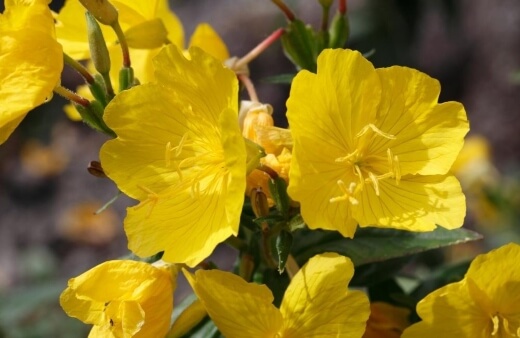
Evening primrose has flowers that taste distinctly like lettuce, so can be added to fresh salads without impacting the flavour, but mixing the colour pallet up completely.
40. Pineapple Guava (Feijoa sellowiana)
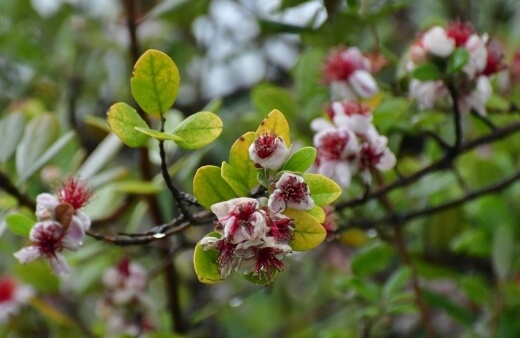
The petals of the pineapple guava are so sweet that they are typically described as candyfloss. The entire flower is edible but it’s the petals that seem to hold the flavour best.
The petals of Feijoa plants are light and can be easily blended into smoothies as a sweetener, or cooked down into chutneys to reduce sugar content.
Complete guide: Feijoa Sellowiana How to Grow and Care Guide
41. Fennel (Foeniculum vulgare)

Fennel flowers are edible but don’t go very far. To make the most of fennel flowers, make a fennel oil by filling a bottle with the flowers, and covering them with a flavourless oil like sunflower oil, or vegetable oil.
The anise flavour of the fennel leaves and bulb can then be used to marinate squash and pumpkins for baking or BBQs.
42. Meadowsweet (Filipendula ulmaria)
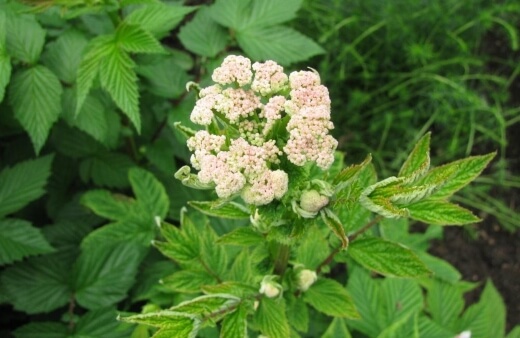
Meadowsweet is such a powerfully sweet flower that I actually find it pretty off-putting, with a sugar content similar to eating raw liquorice root, but that makes it incredible as an additive to other foods.
Just fill a mesh bag with the flowers and leave them to steep in cooking liquids, gin, or wines to add natural sweetness.
43. Finger Lime (Citrus australasica) - Australian Native
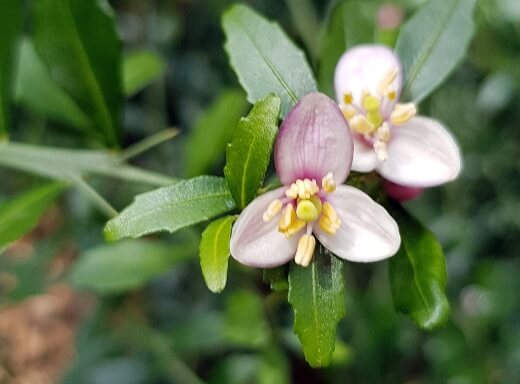
Source: bio.mq.edu.au
The Finger Lime has been one of Australia’s biggest exports in recent years within the horticultural trade, with a growing fascination for the sweeter-then-most citrus fruit. Like all citrus trees, finger lime flowers are edible and are much, much, sweeter than the fruits themselves.
Complete guide: Finger lime tree growing and care guide
44. Forget-me-nots - Australian Native
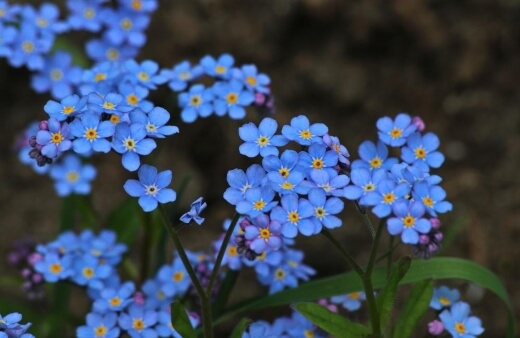
Ornamental forget-me-nots and Native Wood forget-me-nots have edible flowers that work well as decorations, though add little in the way of flavour. They can be found growing wild throughout Australia, but also look great as a frothy under-layer to any garden border.
In depth Guide: How to Grow Forget Me Not Guide
45. Forsythia
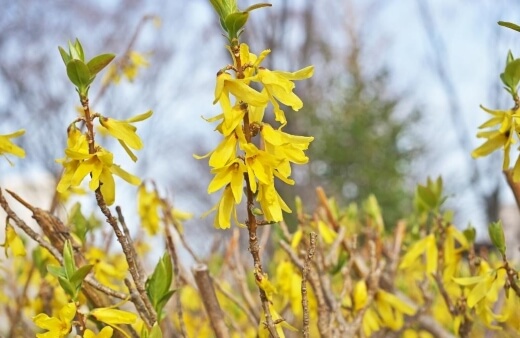
Forsythia blossoms are bitter but work well as a salad garnish in spring when radicchio’s bitter leaves aren’t ready for harvest. There are several recipes online for Forsythia syrup, but the results are a yellow sugar syrup with little flavour, so they should be used fresh where possible to avoid disappointment!
46. Fuchsia
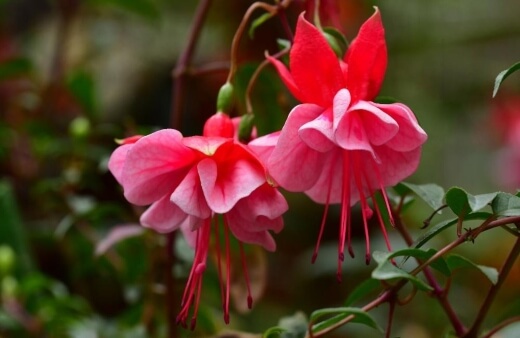
Fuchsia might look like poisonous plants, and you’d be forgiven for making that mistake, with their purple and pink blossoms, and dark, blood-red berries, there are few who would risk eating fuchsia flowers without a little research.
Fuchsia are edible though, with a sweet lemony flavour in their flowers that is subtle but worth trying. The berries are incredibly tart though, and work best cooked or stewed to make a quick syrup as a drizzle over fresh yoghurt to counteract the bitterness.
Here is our in-depth guide to growing Fuchsia in Australia.
47. Freesia
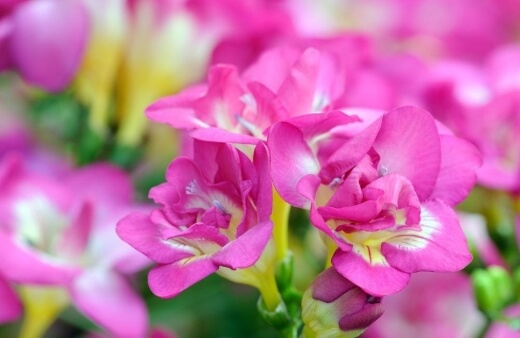
Freesia makes a beautifully sweet, peppery syrup when cooked down with sugar, which can be used to flavour creams and ice creams, but the flowers have a delicate pepperiness when eaten raw and add a really spectacular pop to cakes and salads alike.
Check out our complete guide on how to grow freesias where we also listed the most popular varieties to grow in Australia.
48. Baby's Breath (Gypsophila)
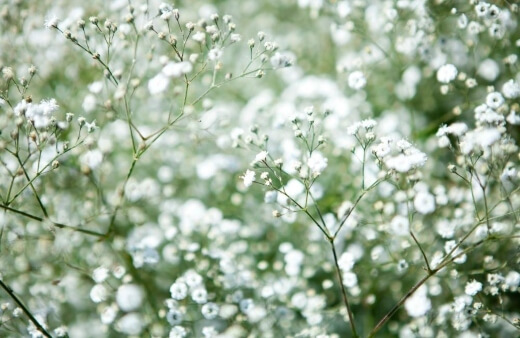
Baby's Breath, or Gypsophila, has cloudy white flowers, sometimes pink, with a mildly sweet flavour which are great for garnishes on cakes and desserts. Aim to use their flowers as quickly as possible to avoid the subtle flavours fading.
Note:
One notable plant we’ve removed from the “G” section is Gladiolus, which does have edible petals but the anthers cause upset stomachs. If you do use the mildly flavoured petals in salads, make sure to remove the anther.
Refer to our complete growing guide on Gladiolus to learn more.
49. Hibiscus and Hibiscus heterophyllus
(Australian Native Hibiscus)

Hibiscus flowers are famously used in tea infusions to add a citrus flavour. Their petals hold most of the flavour so can be stripped from the rest of the flower to help dry for storage and remove the copious amounts of pollen that doesn’t dissolve and can cloud drinks.
Complete Guide: How to Grow Hibiscus Ultimate Care Guide
50. Hollyhock (Alcea)
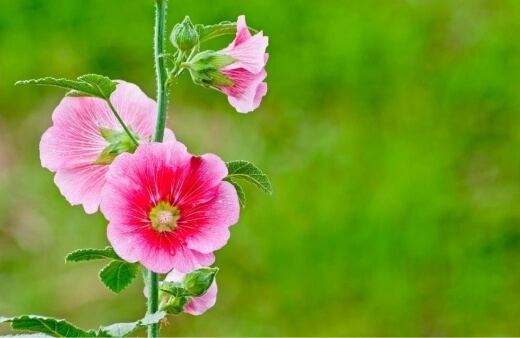
Hollyhock has to be one of the easiest impact plants you can grow in the garden, with towering spikes of flowers. Despite having very little scent on the plant, hollyhock flowers add a beautifully cucumber flavour to salads and the petals are so delicate that they almost melt in the mouth.
51. Honeysuckle (Lonicera)
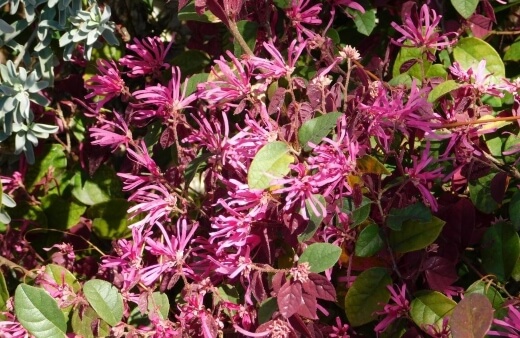
Honeysuckle or Lonicera are native to Europe and Asia, with many species like the Japanese honeysuckle able to live happily in Australian gardens, which provide an excellent food source for birds and pollinators.
The nectar at the base of each flower gathers in such a quantity that you can drink it without even removing the flower. Cook honeysuckle down with water to make a refreshing drink, or add a little sugar to create a sweet syrup to pour over deserts.
52. Hyssop (Hyssopus officinalis)
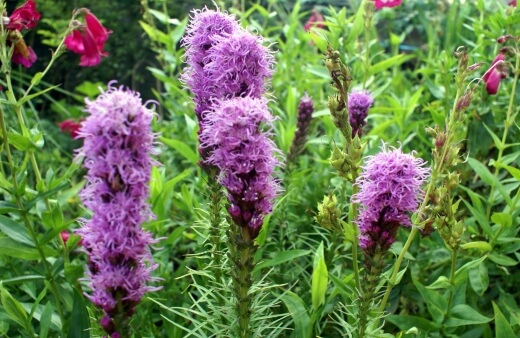
Hyssops work well in salads, with a minty flavour that’s coupled with aromatic floral tones that work well either brewed into tea by itself, or cooked into sauces.
53. Jasmine (Jasminum officinale)

True jasmine is hard to come by in garden centres these days, often replaced with cape jasmine which is easier to grow in Australia, but there is nothing that compares to the afternoon fragrance of jasmine in full sun.
The flowers can be used to make a traditional jasmine tea, but add a heavy floral fragrance to cooking without the sweetness of cape jasmine which means they work well in both savoury and sweet dishes.
54. Running Postman (Kennedia prostrata) - Australian Native
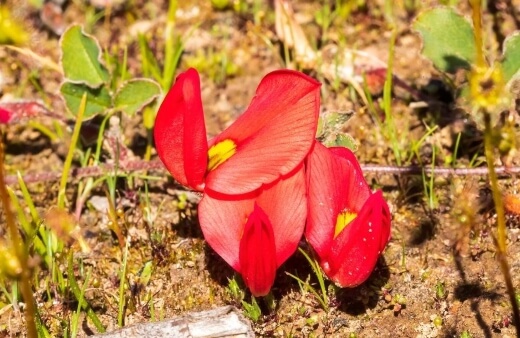
If you struggle to grow honeysuckle in your garden, the native Running Postman, or Kennedia, has masses of nectar that build up in a reservoir at the base of each flower.
Their flowers should be harvested early in the day and used to sweeten tea. One great cooking hack is to soak them in milk overnight, then use that milk for cake batters, adding a fragrant sweetness that just elevates baking to another level.
55. Lavender (Lavandula)
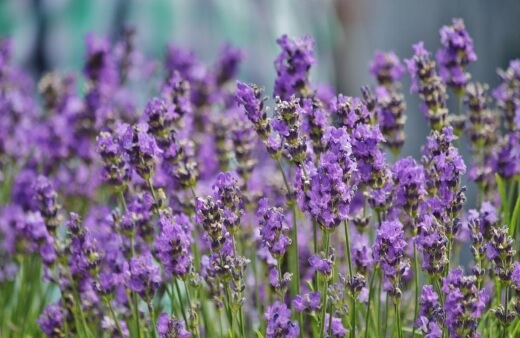
Everyone’s familiar with the calming scent of lavender, so it won’t come as a surprise that all species of lavender are edible too. Use the leaves and flower to flavour syrups, make herbal teas, or mix into biscuits and cake mixes.
There is nothing you can’t do with lavender flowers.
56. Lemon Balm (Melissa officinalis)

Lemon balm flowers have the same lemon menthol flavour as the leaves, with a gentle floral tone that sparks off roses to most. They make excellent salad garnishes but also work well cooked into soups and sauces where a zesty hit can help.
In-depth Guide: Growing Lemon Balm in Australia
57. Lemon Myrtle (Backhousia citriodora) - Australian Native
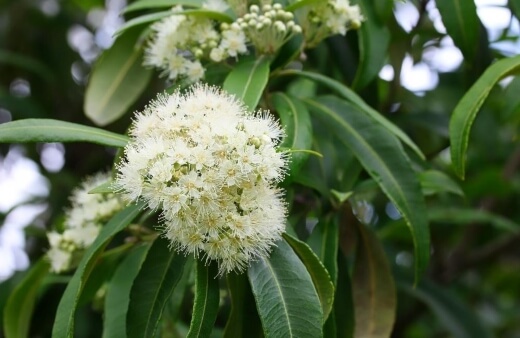
Almost all species of Myrtle come with edible flowers, but lemon myrtle are the only ones truly worth growing for their flowers. The grassy citrus hit from lemon myrtle leaves is carried right through into the flowers, with a subtle sweetness that brings salads to life.
Complete Guide: Lemon Myrtle Australian Growing and Care Guide
58. Lemon Scented Tea Tree (Leptospermum liversidgei) - Australian Native
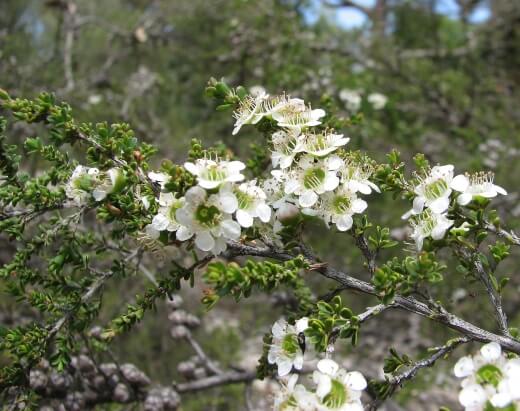
Source: en.wikipedia.org
Commonly known as the Lemon Scented Tea Tree, this particular form of tea tree has edible flowers which carry the same intense fragrance as other tea trees but with a zest that helps carry the eye-watering flavour.
Use sparingly in salads by picking petals and sprinkling them individually rather than using whole flowers.
59. Lilac (Syringa vulgaris)

Lilac, Syringa vulgaris, has one of the most iconic fragrances in the gardening world. When prepared properly, Lilac flowers can add that same fragrance to drinks and desserts, but they need stewing or steeping in water first to bring out the flavour. Eaten raw, lilac flowers are unpleasant and bitter.
60. Magnolia

The flavour range of magnolia flowers is hard to believe when you look at these trees, but depending on the spices they can host flavours ranging from ginger, chilli and cardamom, right through to cucumber and citrus too.
61. Marigold (Tagetes)
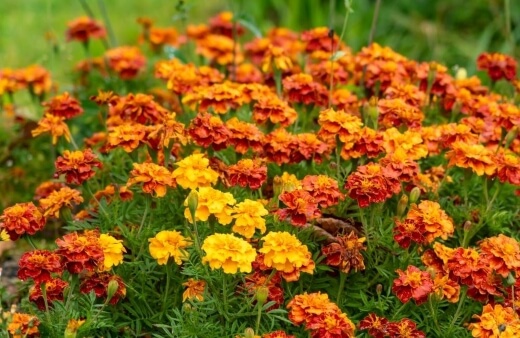
Marigolds have a citrus flavour that matches the scent of their foliage. Added to salads they create an unexpected fizz of tartness which is more than enough to make sure you grow these common companion plants as a regular crop too – just beware of slugs!
Complete Guide: Marigolds – Growing & Care Guide Australia
62. Marrow
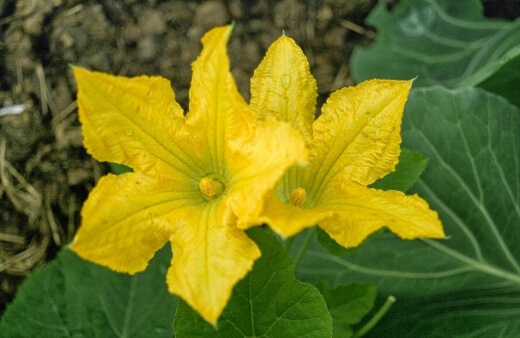
Marrow has edible flowers, just like their smaller cousin, the courgette. The sweet nectar held at the base of each flower makes them truly exceptional for stuffing and helps hold flavours together with mouth-watering nectar that coats everything else if cooked slowly on cooler parts of the BBQ.
63. Mint (Mentha) - Australian Native
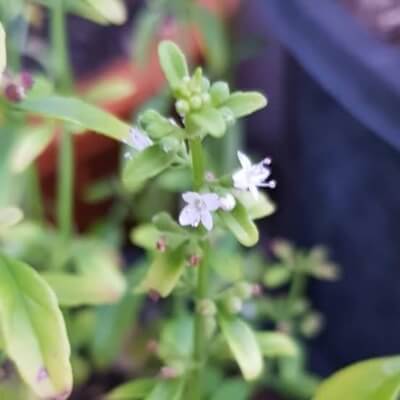
Source: yandinacommunitygardens.com.au
All varieties of mint have edible flowers, including the native river mint. Mint flowers go incredibly well with chocolate but work in savoury foods too. Chopped up finely they can be added to anything for cooking, or eaten raw just as well.
One precaution when growing mint as a crop is to keep it contained. Mint spreads easily with sprawling roots and stems that happily root into any soil they can find, so grow mints in pots, or restrict their roots.
64. Bergamot (Monarda)
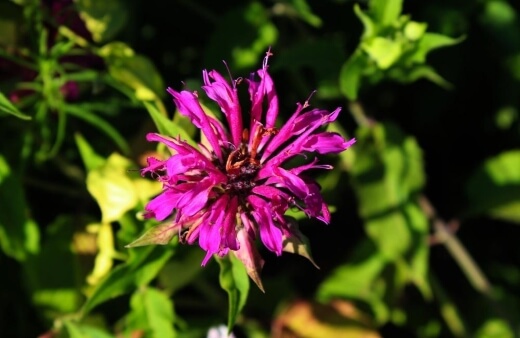
Bergamot is one of the oldest culinary flowers you can grow. The edible flowers of bergamot are sweet, spicy, and when brewed into a tea make a delightfully rich earl grey flavour.
Interestingly though, bergamot tea is most commonly made with the zest of bergamot oranges, which carry flavour more easily. The flavour from bergamot flowers is more subtle but well worth a try.
65. Grape Hyacinth (Muscari)
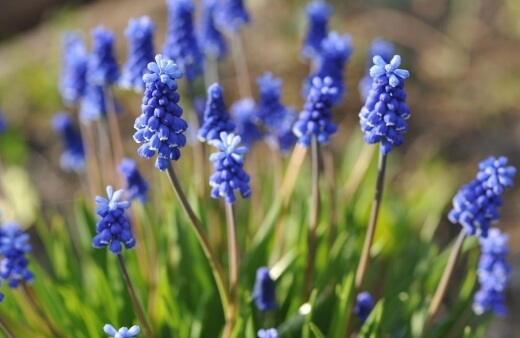
Muscari, or the grape hyacinth, have beautiful low growing blue flowers. They grow best in shaded spaces with reasonable moisture retention, so can be hard to grow in Eastern Australia, but they are a surprisingly useful food crop as well as being a great decorative spring flower.
Muscari roots have a distinctly oniony flavour, which works well sliced up and fried, while the flowers are bittersweet, often reported to taste like grapes (though I think that’s more of a flavour by association).
Grape hyacinth looks like little miniature hyacinths and sometimes mistaken as the same plants. Learn more about Hyacinthus in our complete growing guide here.
66. Nasturtium (Tropaeolum)
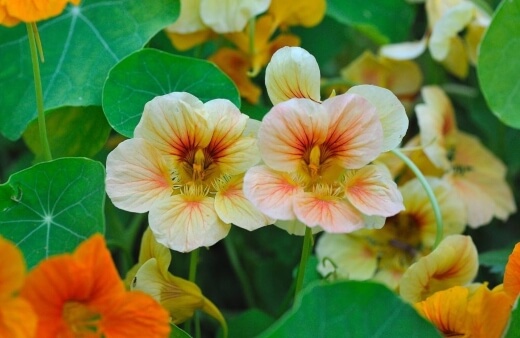
If you only grow one edible flower in the garden, grow nasturtiums. They are exceptionally easy to grow, and sprawl across the garden wherever they can find, often scrambling up trees to find the light.
Their leaves and flowers are both edible, with a beautiful peppery taste that works amazingly in salads far outshining rocket or radish leaves for a pepper leaf crop with the added bonus of bright orange blooms to liven up any plate.
Complete guide: How to Grow, Use and Control Nasturtiums in Your Garden
67. Onion (Welsh / Spring)

It’s best to eat spring onions and welsh onions before they flower as the bulbs can begin to go soft as they start putting energy into flowers, but if your spring onions have started to develop flowering scapes, leave them be rather than digging them up.
The flowers have a wonderful rich flavour more akin to leeks than spring onions, and work beautifully in salads, or broken up in soups.
In-depth Guide: How to Grow Spring Onions
68. Oregano (Origanum vulgare)
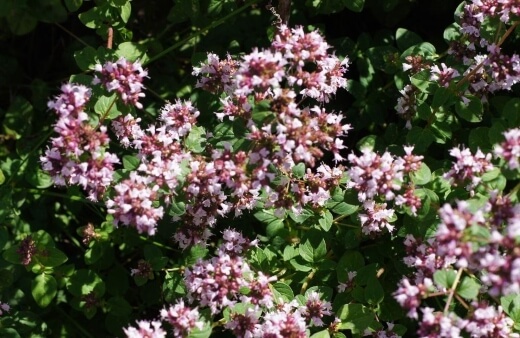
Oregano flowers are a perfect finishing touch to garnish pizza or pasta dishes, with that classic Mediterranean flavour that matches their leaves, but with a blue-white colour that brightens up often mono-tone dishes.
69. African Daisy (Osteospermum)
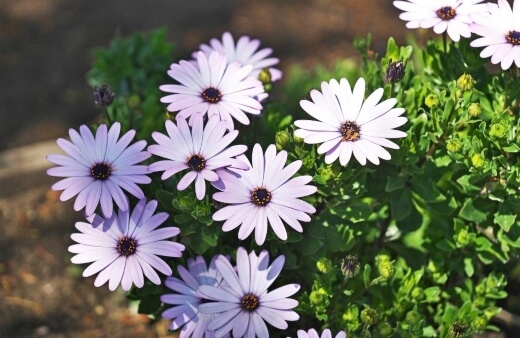
While the African Daisy, or Osteospermum, doesn’t add much flavour to cooking, it looks great as a garnish for desserts with its bright pink blooms adding a soft texture and a mild grassy flavour that works well on sponge cakes.
They might not be native to Australia, but they are incredibly easy to grow here.
70. Pansy (Viola tricolour)
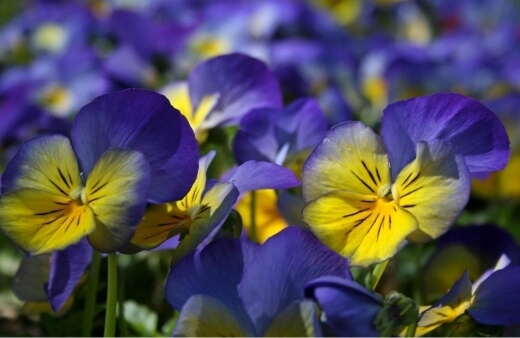
Pansies are a member of the viola family, but have a more varied flower form. Both are edible though, so don’t worry if you get them mixed up. Pansies and violas have wonderfully spicy lettuce flavours that are great for sweet dishes and help to cut through sugars and syrups.
71. Pea Flower
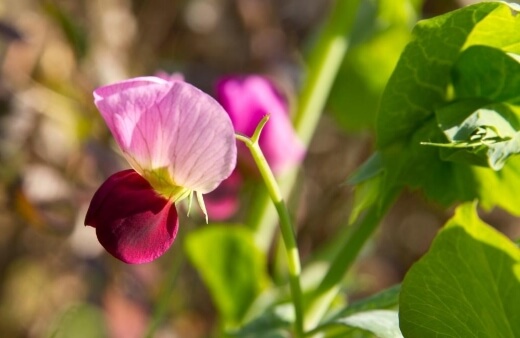
Pea flowers, just like pea shoots, and peas, are sweet, earthy, slightly nutty pops of flavour that work best in salads if you want a hit of pea flavour in spring before any peas are ready for harvest.
72. Peonies (Paeonia)

Peony petals are edible with a subtle sweetness that matches their pastel coloured flowers perfectly. If ever there was a flower that tastes how it looks, it’s the peony – perfect as a garnish or broken down into petals and soaked in water for a subtle hint of floral sweetness.
Find out more about peonies, its types, growing habits, and more importantly, how to grow and care for this colourful plant.
73. Perennial Phlox
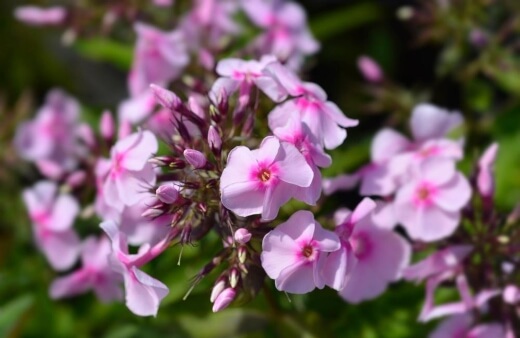
Phlox flowers are spicy but not overpowering. Add their edible flowers to fruit salads to bring out the flavour of fresh fruit, or preserve them by cooking them in sugar and draining them over mesh.
74. Polianthes tuberosa (Agave amica)
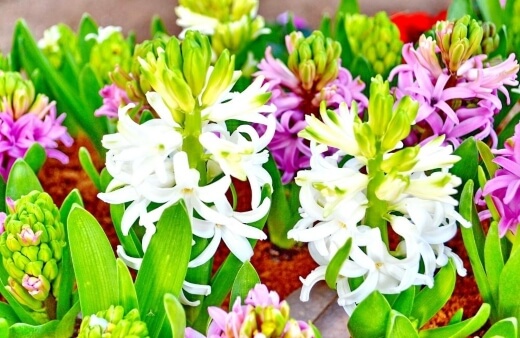
Polianthes tuberosa might have been renamed ‘Agave amica’ but that doesn’t change the fact that its flowers are packed with flavour. The flowers of these gorgeous plants are used to flavour soy sauces and were traditionally used to bolster the flavour of chocolate by the Aztecs.
Today, the best way to cook them is to add to soups to help bring a basal richness to the mix.
75. Polyanthus, Cowslip, Primrose (Primula)
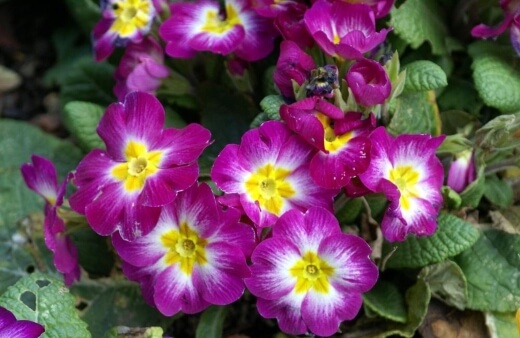
The wide and diverse family of polyanthus, primroses, primulas and cowslips all have dibble flowers. While their flavour is very subtle it’s worth adding them as decorations to brighten up icing on special occasions.
76. Mint Bush (Prostanthera) - Australian Native
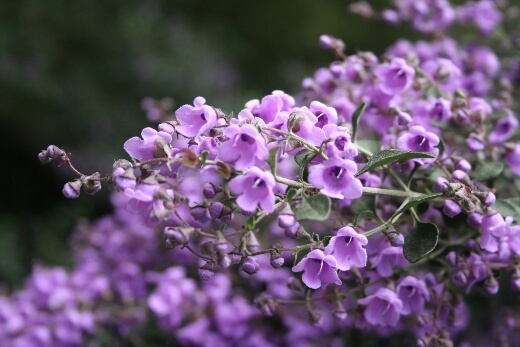
Source: thetutuguru.com.au
The edible flowers of the mint bush are a great bit of bush tucker for hungry foragers. Prostanthera produce a wash colour in summer and the flowers are safe to eat with a mild minty flavour that works best when cooked.
Check out some of our Prostanthera growing guides below:
77. Pumpkin
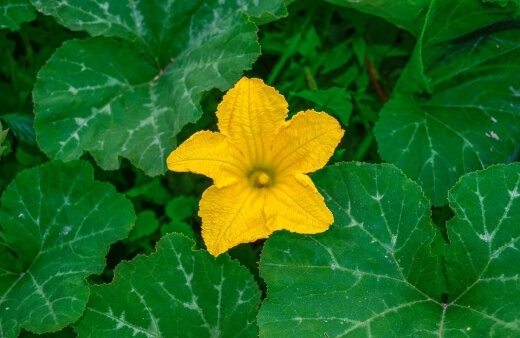
Pumpkins and squashes have similar flowers to courgettes and marrows, filled with nectar to attract pollinators. While you can harvest baby courgettes with the flowers still attached, you’ll need to be quicker with pumpkins as their flowers drop before the fruit begins to form.
Stuffed with a mix of mashed squash, courgette or cheese, pumpkin flowers are completely beautiful fried treats with a rich sweetness that is hard to get enough of.
You can also slice up pumpkin flowers and mix them through pasta sauces much like spinach, for a sweeter touch.
Check out our detailed guide on how to grow pumpkins for everything you'll need to know.
78. Radish (Raphanus sativus)

Radishes are surprisingly hard to grow in Australia, preferred wetter springs that we usually get, but don’t fret, the leaves and flowers are edible if it’s too late to save the root, and are a great spicy addition to salads.
Here is our compilation of the best radish varieties to grow in Australia.
79. Robinia
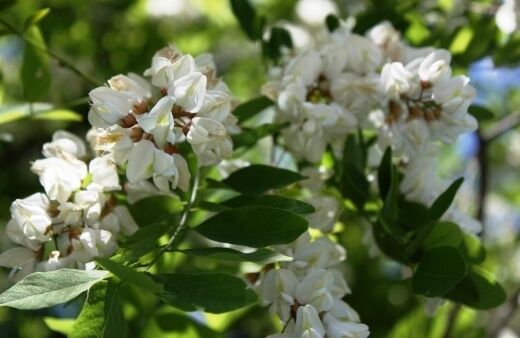
While most of the Robinia species is toxic, the flowers are safe to eat, with a sweet flavour that is most similar to honey. Do be careful if foraging for robinia though, as the stems, bark and leaves are toxic, so remove the hanging flowers and discard any other part of the plant.
80. Rocket flower
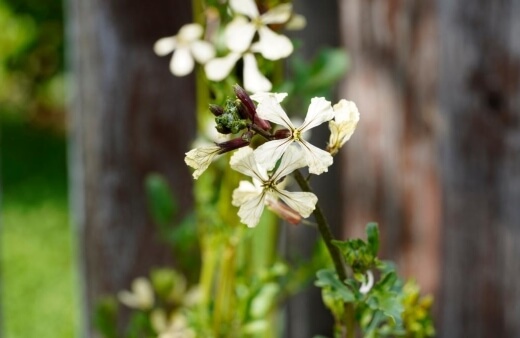
Rocket, as you might expect, has flowers that carry its distinct peppery flavours but with a far subtler effect, and a much gentler texture too. For a finishing flourish to a salad, or pretty much any meal, sprinkle over rocket flowers instead of ground black pepper.
81. Rose (Rosa)
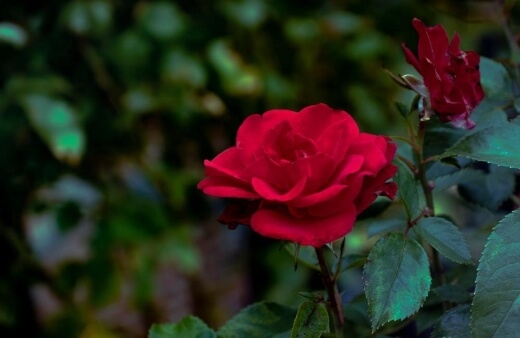
Roses vary massively in quality when it comes to eating, but if a rose smells good, it will taste good too. Rose petals can be used to make jams, crystallised in sugar or just used raw as a garnish.
There is pretty much no bad way of using roses, as they taste divine in any dish, sweet or savoury. Even after roses have flowers that same fragrance can be found in the bitter rose hips that follow flowers.
82. Rosemary (Salvia rosmarinus)
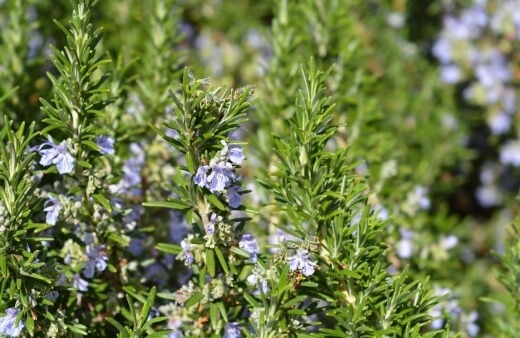
Rosemary flowers are a good way to change up your normal culinary habits. Their flavour is pretty much identical to rosemary leaves but with a texture that melts away when cooked, or dissolves in the mouth when sprinkled over roast dinners.
To spice things up a little try mixing rosemary flowers into cake batter, or biscuit doughs for a savoury twist. Rosemary flowers and leaves can be used with poultry or pork - try adding a few flowers to biscuit dough to add flavour.
Complete guide: How to Grow Rosemary in Australia
83. Runner Beans (Phaseolus coccineus)
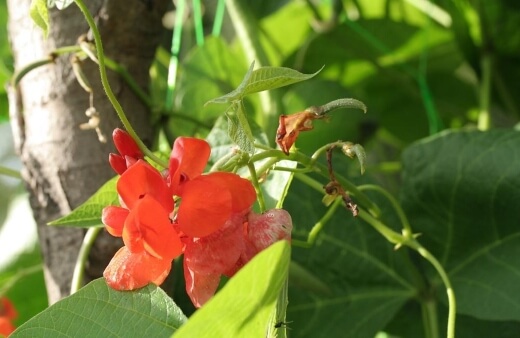
Runner beans are great, but let’s face it, you’re going to have a glut. Runner beans grow so rapidly in summer that it’s hard to keep up with them, so help reduce the harvest by eating flowers before they’re pollinated.
The sweet, nectar filled petals complement the subtle bean flavour of the flowers perfectly and will make a salad that beats anything you’ve tried before.
84. Sage (Salvia officinalis)
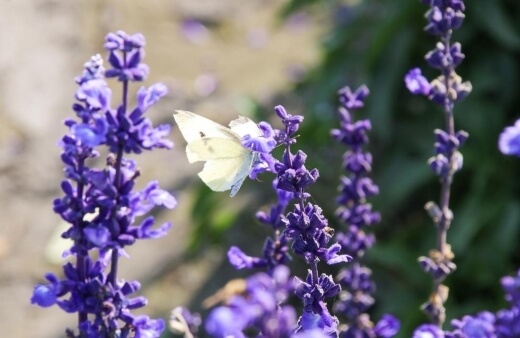
Sage is the one salvia you can be sure is safe to eat, with scented leaves holding most of their flavour, many are surprised by just how beautifully delicate sage flowers are. Sage flowers are edible though, and make an excellent addition to pretty much any savoury dish you can think of, either cooked or raw.
Check out our list of the best sage or salvias to grow in Australia.
85. Salsify (Tragopogon porrifolius)
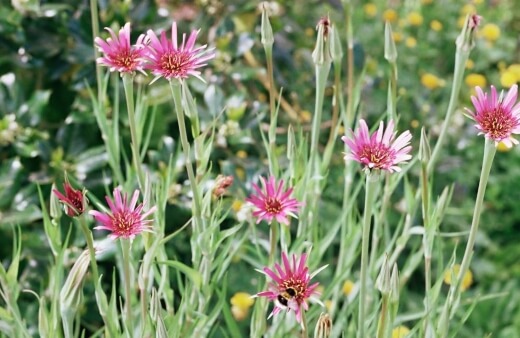
Salsify is, without a doubt, my least favourite edible flower. They are commonly described as tasting like oysters, which I know for many is an appeal, but for me, a plant that tastes like seafood isn’t worth the soil it’s grown in.
If you do decide to grow salsify, it’s fine cooked and raw, and does have some nutty benefits when cooked into soups.
86. Scented Pelargoniums
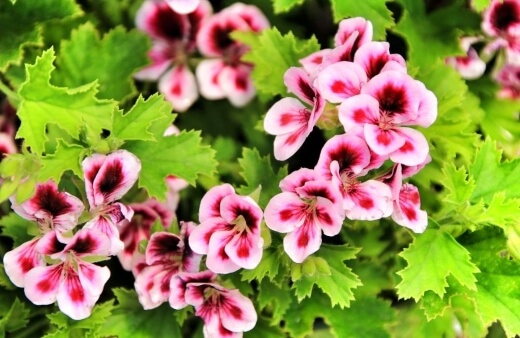
- Pelargonium ‘Clorinda’
- Pelargonium x fragrans
- Pelargonium graveolens
- Pelargonium quercifolia
- Pelargonium tomentosum
Scented pelargoniums come in so many varieties that it’s hard to describe the entire species cluster in one go, but the flavour of the flowers is almost always matched to the scent of the leaf (which is also edible).
You can use the flowers or leaves to add fragrance and a zesty hit to cake mixes, or even crystallise them to sprinkle over the top of desserts for a sugar hit.
87. Squash

Squashes, including pumpkins and butternut squash, have edible flowers filled with sweet nectar. They make gorgeous casings for stuffing with a sweetness that helps carry richer umami flavours together really well.
Check out our squash growing guide for more info on squash, its varieties, and how to grow them in Australia.
88. Stocks (Matthiola)
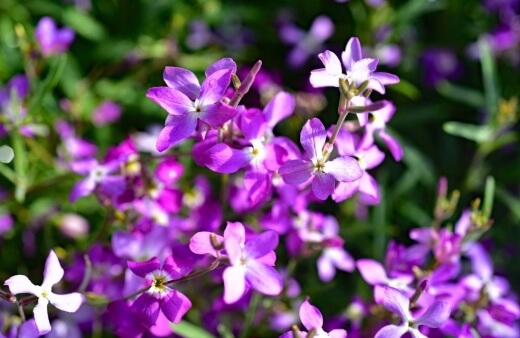
Stock is one of those flowers that every gardener should grow. Night scented stock in particular is a mystifying plant that pumps out fragrance and nectar as the sun goes down in the evening and can fill most gardens with scent on warm evenings.
The flowers have a similar flavour to their fragrance, which is sweet, and quite similar to jasmine, but with a berry-like undertone that really jumps out of salads.
89. Strawberry (Fragaria × ananassa)
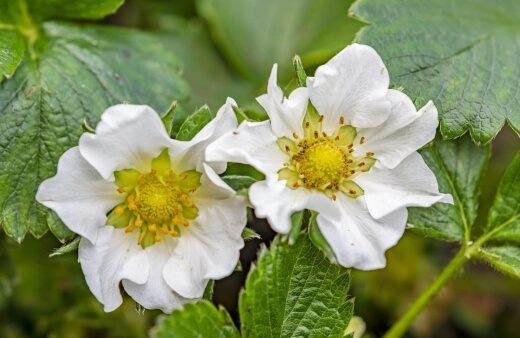
Strawberry flowers have a mild strawberry flavour and work really well as a garnish for cocktails and desserts. Always eat strawberry flowers raw, and be aware that once you’ve picked the flower, you’re not going to get a strawberry!
90. Sunflower (Helianthus)
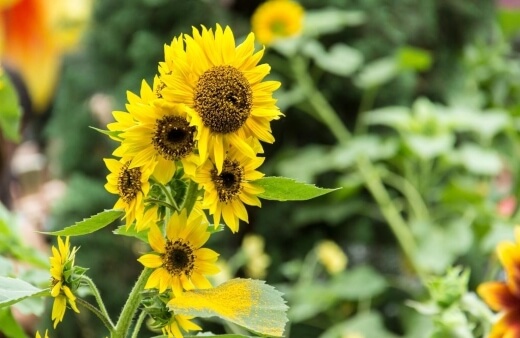
Every part of a sunflower's flower is edible and blanched or roasted in butter, they taste similar to Jerusalem artichoke. The petals don’t taste of much but do give a mild nuttiness to salads, and obviously, once they set seed, their seeds are a great way to get healthy proteins and fats into your diet too.
Complete guide: Sunflowers – Helianthus Growing and Care Guide
91. Sweet Cicely (Myrrhis odorata)
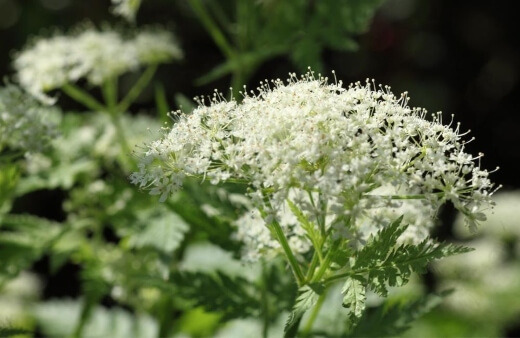
Cicely has a sweet aniseed flavour that keeps even through cooking and holds a fresh aromatic quality that’s hard to describe. Personally, I think there’s a carroty sweetness to Sweet Cicely flowers.
Mix the flowers into a fruit stew, or throw them into a fruit crumble mix to wilt down during cooking. The flowers melt away when cooked but add a unique anise flavour.
92. Sweet Mace (Tagetes lucida)

Tagetes lucida, or Sweet Mace, is a common culinary herb often used to substitute tarragon. The earthy herb works beautifully in stews and soups and you can dry the flowers to keep in the kitchen for winter too as they hold their flavour in the petal rather than their nectar.
93. Tulip (Tulipa)
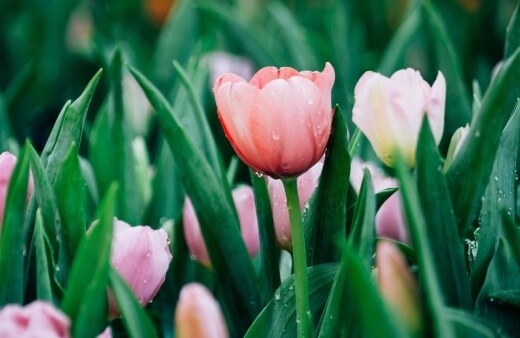
If you want to try tulip petals in salads, remove the stamen and rinse pollen from the petals before eating as they do contain small amounts of toxins.
The petals from tulip flowers have a delicate pea flavour, which is brilliant in salads, but it’s really important to remove all other parts of the plant as tulip bulbs in particular can cause severe digestive upset.
94. Viola

I adore Viola, packed into hanging baskets and window boxes. There’s something beautifully nostalgic about their reliable colour that just makes me happy.
But if that’s not enough, their lettuce flavoured flowers work beautifully as a garnish for sweet and savoury dishes in equal measure. To grow them in your garden, you’ll need a regular watering routine though as they tend to grow quite leggy in hot summers.
95. Wahlenbergia - Australian Native
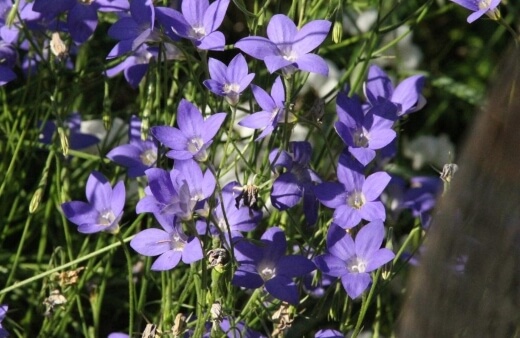
As a native Australian wildflower, Wahlenbergia is one of the easiest edible flowers to grow in Australia, usually reaching just over a foot tall, they produce masses of blue flowers at the tips of long slender stems, and their flowers make an excellent addition to salads.
While Wahlenbergia can tolerate short droughts, they do need to be fairly well watered to produce their distinct tangy flavour.
96. Wisteria
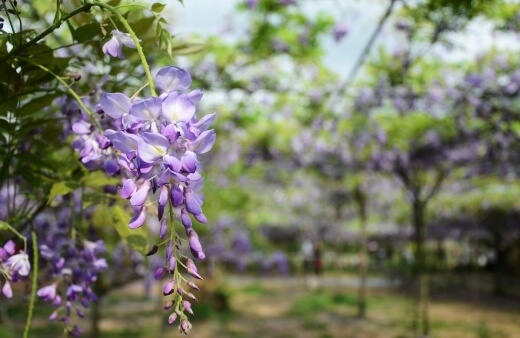
If you want a reliable climbing plant to cover the side of your house, or trail down from a pergola, then Wisteria is always going to be on that list. What’s often overlooked with wisteria is that it has a truly incredible fragrance as well as its striking beauty, and that fragrance carries through into flavour too, but be careful.
Every part of Wisteria other than its hanging flowers are highly toxic, including the seed pods, so only use fresh flowers, and discard any stems or leaves. See our guide and find out how to grow Wisterias the right way.
What Flowers are Toxic?
While many flowers in the garden are edible, but not worth eating, there are some that are distinctly toxic and can cause anything from a mildly upset stomach to liver failure.
Some of the most common toxic garden plants are listed below, but if you’re ever unsure, don’t eat them!
Common toxic flowers include:
Edible Flowers Frequently Asked Questions
What is the most popular edible flower?
Hibiscus flowers are some of the most popular edible flowers globally. These plants produce large blossoms that grow in tropical and subtropical regions around the globe.
Out of the hundreds of available species, the most popular edible variety is known as roselle (Hibiscus sabdariffa).
What are the benefits of eating edible flowers?
Edible flowers can easily elevate the appearance of your food and plating. Their nutrient content also contains many essential vitamins and minerals that are beneficial to our health.
This includes but is not limited to vitamins A and C, niacin and minerals like calcium, phosphorus, iron and potassium.
How long do edible flowers last?
Most fresh flowers should last about a day without refrigeration and around 5 to 14 days when refrigerated. This can vary depending on the species and type of flower stored.
Can edible flowers make you sick?
Many species of flowers are commonly known to be toxic when consumed. However, these aren’t the flowers you will typically see at your local markets presented on embellished cakes.
Thanks to dedicated cultivation, there are now hundreds of safe edible flowers available to us globally.
How do you make edible flowers taste good?
You can candy your flowers with a coating of meringue powder, water and some sprinkled sugar for use in sweeter dishes and desserts. Be sure to allow them to dry before using them as a garnish.
Do edible flowers need to be washed?
It is always a good idea to lightly clean any fresh produce you are consuming raw. Be sure to avoid rinsing your edible flowers in running water as this could damage the petals and structure of the blooms. Rather, gently steep them in a bowl of cool water, lightly swishing them around a few times.
Do edible flowers need to be refrigerated?
Once harvested, flowers should ideally be stored in a refrigerator and used as soon as possible for the best flavour and texture. Be sure to use a plastic container rather than a plastic bag to avoid accidentally crushing them.
Can you dry edible flowers?
You can dry edible flowers by placing them in a food dehydrator. Spread them evenly and place them in low heat for a couple of hours until the petals have lost all moisture. You can then store them in airtight containers for use within a few months. Most herbs will need to be hung and dried.
For more edible plants to forage or grow at home, check out our list of edible weeds in Australia.
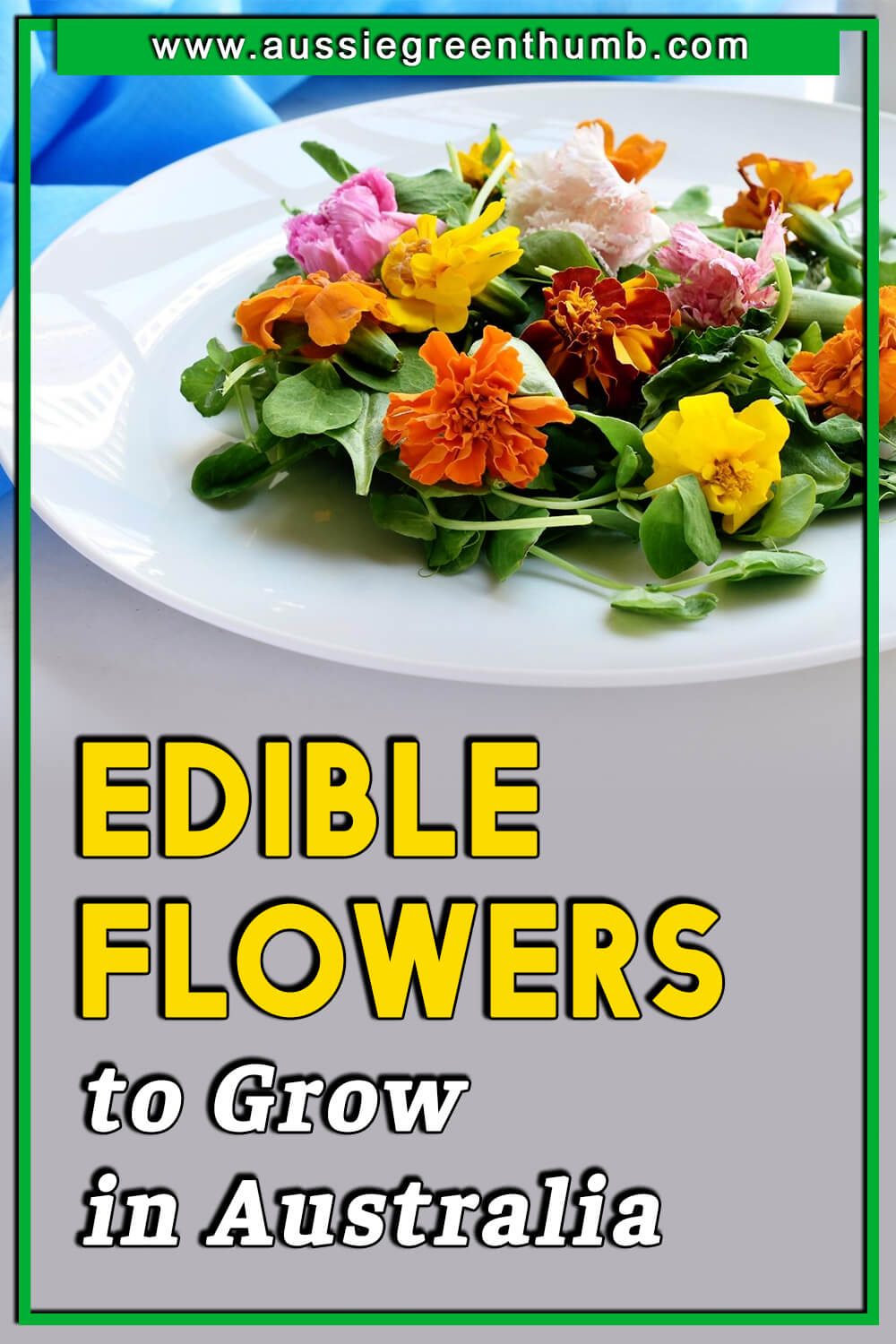
Enjoy Edible Flowers in Your Garden
Always take care when foraging, and be absolutely sure before trying to eat any unfamiliar flowers that they are safe to eat. The guide above acts as native and non-native species of edible flowers, and you should always refer back to the edible flowers list above to check any particular preparation instructions – particularly on bush tucker edible flowers.
Edible flowers are often seen as a fad, or something for chefs to show off with, but in reality, they add distinct and unusual flavours that we’re just not used to, and can open up a whole new range of kitchen treats, so make the most of the edible flowers in your garden this summer, and try adding a few to salads to get started.
Published on January 6, 2023 by Lorri Hopkins
Last Updated on September 20, 2025

